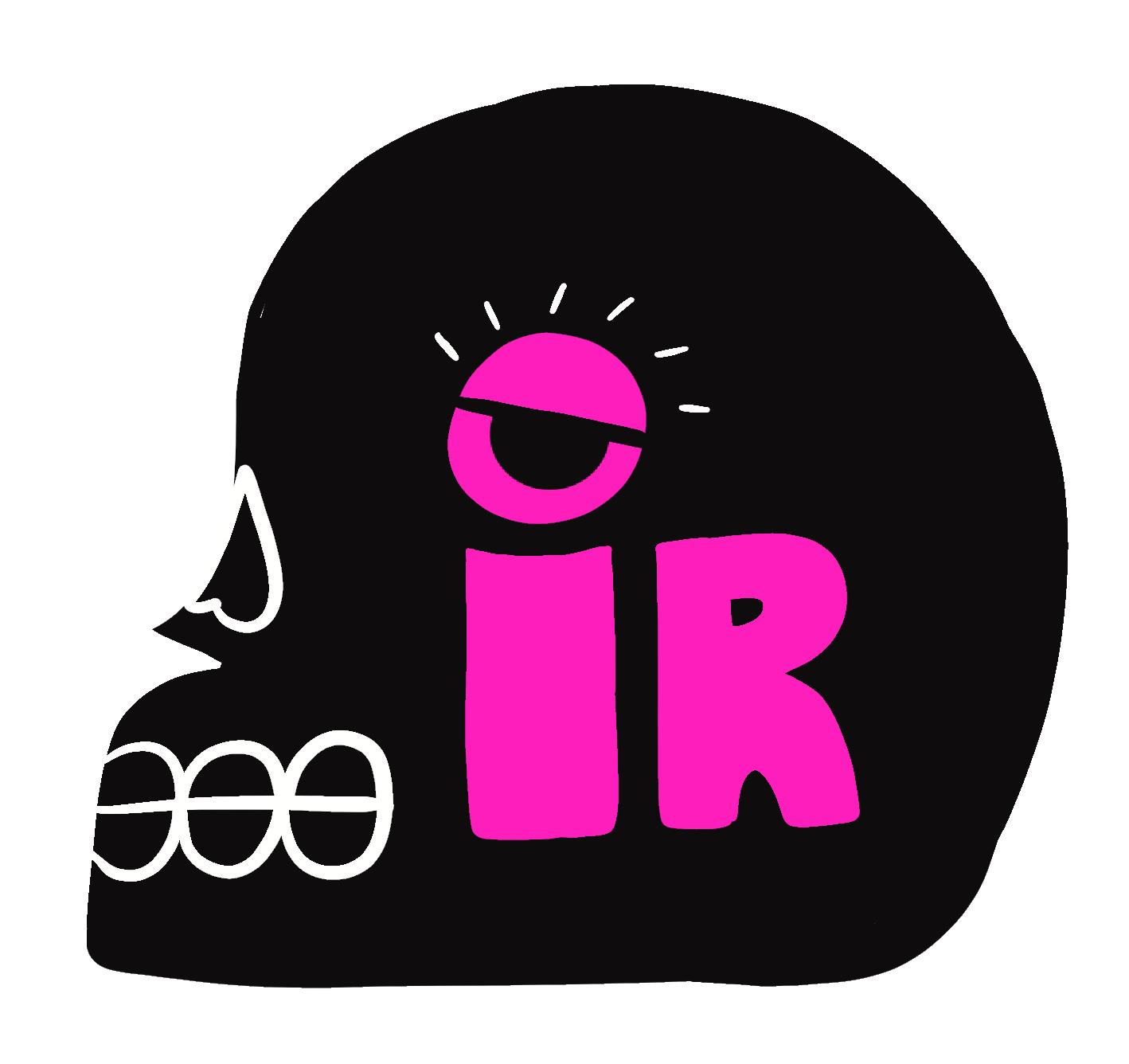This interview is part of our Trans Poetica series. Our panel, Trans Poetica, will be held on June 5th at Gemini Ink in San Antonio, TX. This panel will feature Stalina Villarreal, SG Huerta, and Keagan Wheat. Learn more here.
CLOUD CARDONA
Thank you so much for being part of this programing Stalina! I’m excited to have you in San Antonio on June 5th. I’m very excited to talk with you about poesía y arte. Could you talk about your introduction to visual art?
STALINA VILLARREAL
In high school, I took an art class, and although my high-school’s literary and arts magazine accepted and published my self-portrait, I was on a STEM track because I wanted to become an engineer. It wasn’t until my senior year when a mentor suggested that I major in computer science because it incorporates fields outside of its own field. In the process of taking computer science in college, I hated programming enough to have the desire to throw a computer out the window. That’s when I gave up STEM altogether and switched to being a studio art major. I dabbled with painting, photography, and drawing, but my focus was sculpture because I could still use my physics knowledge.
CLOUD CARDONA
I’m also a poet and visual artist so I’m always curious to hear other poet/artists’ relationships to both, We’re they always intertwined to you? How did you arrive at writing poetry about art?
STALINA VILLARREAL
At times, my sketchbook was my journal instead of a sketchbook. My high-school teacher was influential in teaching me poetry, so when critics from New York City visited my art school to tell us that artists need to write about art, I asked if I could write poetry about art. The critics said that they don’t know how to write poetry and couldn’t advise me on how to do that. In the meantime, I was submitting my sculptures to the department contests, and my poems to the English department contests. One of my poems won an honorable mention worth $25, so when I graduated from college and couldn’t afford my own studio, I decided that I wanted to go to graduate school as a pencil pusher at an art school. I incorporated photographs into my MFA thesis, but it wasn’t until I took an art history class in my PhD program that I started writing poetry about visual art.
CLOUD CARDONA
I’d love to talk about your debut poetry collection, Watcha, from Deep Vellum. In your collection, you create a Deep Watching manifesto, inspired by Pauline Oliveros’s practice of Deep Listening. In Watcha’s notes section, you mention that you took a Deep Listening workshop led by Pauline Oliveros that changed your life. Could you talk more about that experience?
STALINA VILLARREAL
Pauline Oliveros talked about her Deep Listening process and her collaborations with musicians and vocalists. She said that once you start planning what sound you’ll perform, you’re no longer listening. The goal is to respond to what you are listening to at the moment. She had a group of us sing while walking around the room and to change our singing depending on whose singing we encountered. When I passed by a friend, I noticed that I sang more in sync when we approached each other. I started to brush my teeth at rhythms that corresponded to sounds I like, and when I was asked to read my poetry with sonic improvisers, I was ready.
CLOUD CARDONA
You write about a variety of art pieces through Watcha. How did you go about choosing the art pieces you wrote about in Watcha?
STALINA VILLARREAL
I was asked to read some poems at a gallery that partook in the arts festival Latino Art Now! In 2019, it was hosted in Houston, and there were tons of exhibits by Latinx artists—the majority were local artists. I decided to write poems that were about the artwork in the exhibit for my reading, and that’s when I started to write Watcha.
My mentor Roberto Tejada who is both a poet and art historian suggested that I check out an exhibit in the Queens Museum that had a sci-fi futurist vibe. The artwork was by Latinx and Latin American artists, but I was only interested in the Latinx experience. At the time, there was a Facebook group called Latinx Scholars, so I found out about and went to an exhibit by Afro-Latinx artists in Los Angeles and an exhibit that was a collaboration between Latinx and Native artists in Santa Fe. I also had plans to look at a Xicanx exhibit in San Antonio during the 2020 AWP conference, but the pandemic hit, and I did not go.
I didn’t write about all the art I looked at, only the pieces I felt most connected to emotionally. I had twice the number of poems that ended up in Watcha. I selected the ones that were strongest in terms of poetics.
CLOUD CARDONA
Many poems in your collection move like staircases, could you talk about the use of enjambment in your poems?
STALINA VILLARREAL
I heart enjambment. During my MFA program, I wasn’t taught Latinx poets, so I had a hard time finding poetics that related to my experience. Nonetheless, my favorite poems were by Nathaniel Mackey, who uses a lot of enjambment. I found that each new line brought a surprise, a turn that I love. I started to practice enjambment religiously.
CLOUD CARDONA
There are also many prosaic moments, could you talk about your decision to include these prosaic pieces in your collection?
STALINA VILLARREAL
One of my friends suggested that I introduce the poems with prose, so I originally had four prose sections. I had paid ire’ne lara silva for a manuscript consultation, and she said she loved the prose and that I needed to create more prose sections to make the manuscript more dynamic. I ended up with nine pieces of prose.
But prose is something that felt limiting to me for many years. I felt that prose was a societal coercion with all its rules. I originally wanted to write only free verse all the time. Just eat, live, breathe poetry. It wasn’t until I started writing prose in Spanish that I felt that prose was freeing, hence why there is so much Spanish in the prose in Watcha.
CLOUD CARDONA
There are many Chicanx references in your book, both in language and artists mentioned like Judy Baca, Gloria Anzaldúa, Laura Aguilar, etc. You also reference that your mom was a Chicana activist. Could you talk more about your relationships with these artistic and literal ancestors? What do you have in common with these women and what do you reject?
STALINA VILLARREAL
I’m fourth-generation immigrant, and my mom was raised during the Chicano Movement. She referred to herself as both Mexican and Chicana. She rejected the concept ni de aquí ni de allá; instead, she said we are from both here and there. But as an immigrant, I didn’t feel welcomed by my Chicanx counterparts in elementary school. Kids are cruel. I remember one of them threw a spitball into my mouth when I was yawning. It wasn’t until high school when I worked for sociologists that one of them used the term 1.5 generation to describe people who were brought to the United States during early childhood. That made sense to me because I shared experiences with immigrants as well as Chicanxs.
When I went to a Mario Benedetti poetry memorial at Texas A&M in 2009, the Uruguayan poet Eduardo Espina asked if I should be introduced as a Mexican poet or Chicana poet. I told him that I didn’t know. He told me it was more prestigious to be a Chicana poet. I didn’t understand why, but we didn’t have time for a conversation.
After being hired at the local community college, my Chicanx colleagues who were very welcoming had me present my poetry, and one of them took me to El Mundo Zurdo, the conference dedicated to Gloria Anzaldúa. The talk of codeswitching made me feel at home, and that’s when I began to read more Anzaldúa, and her relationship to women deities was the first time I understood religion, since I was raised atheist.
Judy Baca and Laura Aguilar are artists I admire, although I don’t have the aversion to abstract art that Baca has. I was happy to write about their artwork.
I had thought that my incorporation of Anzaldúa was celebratory as well, but after Watcha was accepted for publication, I started following the Afro-Latina poet Ariana Brown on social media. She argues that Anzaldúa’s Borderlands/La Frontera is based on genocide, which I don’t understand, but as a listener, I have stopped reading the Anzaldúa parts of Watcha at readings.
CLOUD CARDONA
I’d love to talk about language. You use Spanish, Spanglish, and Caló throughout your book, could you talk about this choice?
STALINA VILLARREAL
I love Spanglish, but growing up in the United States, my grandparents forced me to speak in Spanish in their home. It wasn’t until I started to translate poetry that I started to read more in Spanish. Reading about sex and theory was something that wasn’t spoken at their home, so it was freeing to learn more Spanish. At the same time, Spanglish is really my comfort zone. English is more what I was taught to read and write in school.
The choice of Caló came from watching the film Zoot Suit. As I kept hearing Edward James Olmos say, “Watcha!” I kept remembering expressions like wátchale or ay te watcho cucaracho. The word watcha seemed perfect as the title of the book. Also, Jef Huereque’s painting about his parents in zoot suits prompted me to read the play Zoot Suit, which inspired the language in the poem about the artwork, hence my credit to Luis Valdez in the poem.
CLOUD CARDONA
What do you think artists can learn from visual artists? and vice versa?
STALINA VILLARREAL
We can learn from visual artists a different way of looking. What visual and non-visual artists can learn from each other is a different way of thinking and feeling. I also think we can collaborate with one another to make sensory communication even more expansive.
CLOUD CARDONA
I wanted to end with some sensory details. If your poetry was a scent, how would you describe it? What are the top notes?
STALINA VILLARREAL
Definitely the smell of petrichor. It can be experienced in both urban and rural settings, but there’s nothing like the smell of rain on the earth to bring back memories and experiences while still making you feel present. Poetry can have that power as well.
Stalina Emmanuelle Villarreal (she/they) sees, hears, feels, and communicates across mediums and cultures. She’s a deep-watching ekphrastic poet, a photographic eco-essayist, a broad-stroke sketch artist, a sonic improv performer, a sound-sensitive literary translator, and an assistant professor of English. Their bilingualism stems from her 1.5-generation experience being both Mexican and Xicanx. Her debut collection of poetry called Watcha is out now from Deep Vellum Publishing. Their poetry can be found in the Rio Grande Review, Texas Review, The Acentos Review, Defunkt Magazine, and elsewhere. Her published translations of poetry include Enigmas by Sor Juana Inés de la Cruz, Photograms of My Conceptual Heart Absolutely Blind by Minerva Reynosa, Kilimanjaro by Maricela Guerrero, and Postcards in Braille by Sergio Pérez Torres. Stalina is the recipient of the Inprint Donald Barthelme Prize in Poetry. Their visual poetry—spanning queer erotica, interactive digital art, and video installation—was part of the Antena@Blaffer exhibit at University of Houston’s Blaffer Art Museum. She is currently writing ekphrastic elegies about her interpretative drawings of portraits and a memoir about her photographs of nature—revealing her ability to look backward and within, to write new ways forward.




